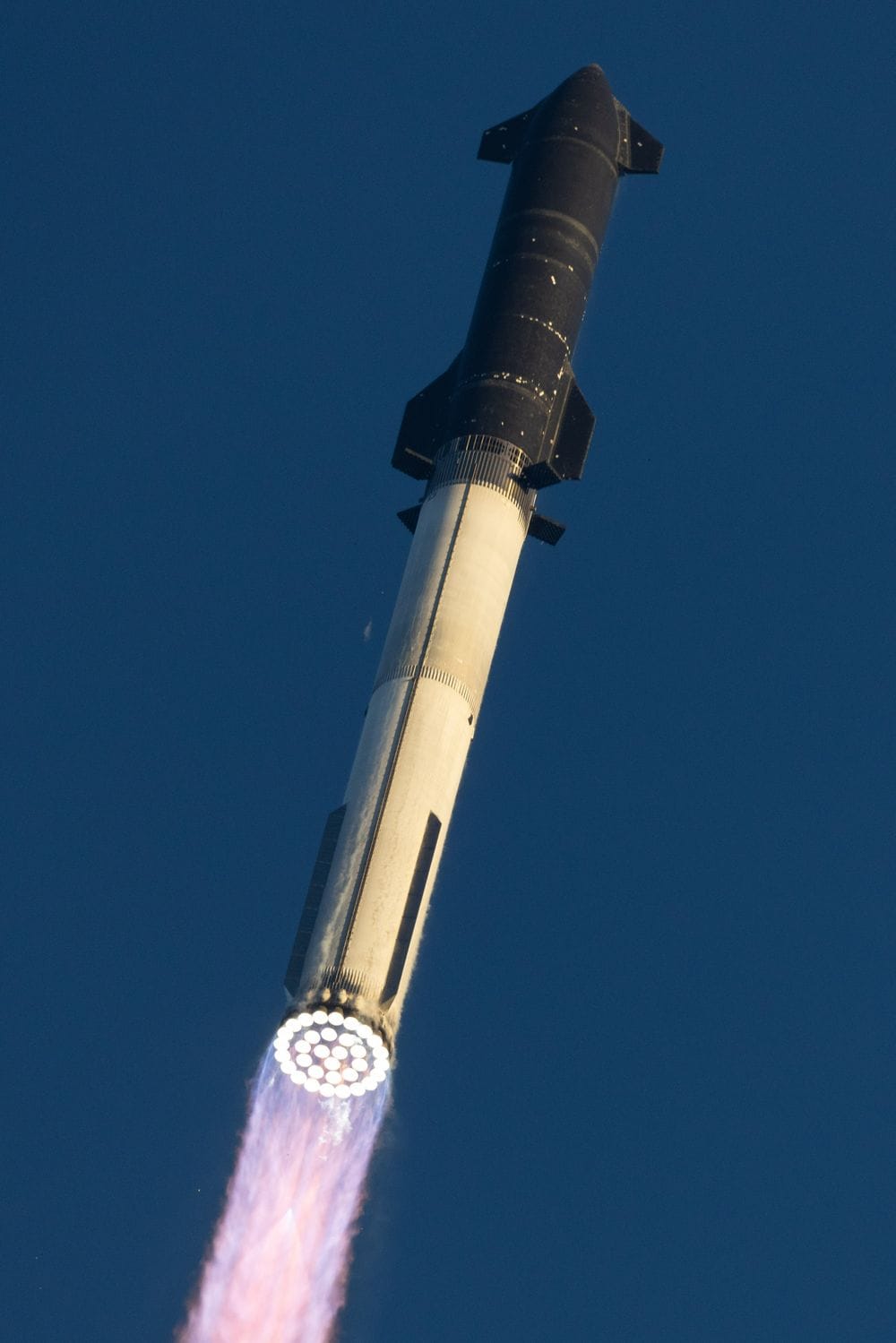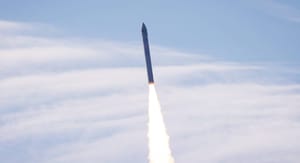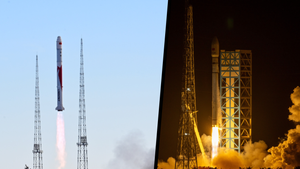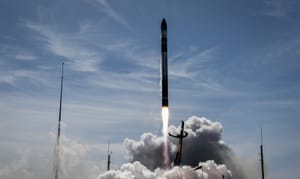
Dec 9, 2023
Why SpaceX's Super Heavy booster works where the N1 failed
Disclaimer: This article may contain the opinion of the writer and not Cosmic Nxws as a whole in some parts of the article.
With the recent success of Super Heavy booster 9 during Starship-Super Heavy's second integrated flight test, the conversation around the Soviet N1 rocket has begun once again.
The Super Heavy booster and the N1 both have over two dozen engines on the first stage, thirty-three Raptor engines on the Super Heavy and thirty NK-15 engines on the N1, to lift the entire stack of their respective launch vehicles. Both also qualify as super heavy-lift launch vehicles. However, this is where the two launch vehicles' similarities end.
Starship-Super Heavy is powered by the same 'Raptor' engine in two versions, sea-level and vacuum, burning liquid methane and liquid oxygen whereas the N1 was powered by three different engines across its stages with some commonality while burning rocket-grade kerosene and liquid oxygen. For the Starship-Super Heavy engine design SpaceX opted for a full-flow staged combustion cycle to produce 230 tons of thrust per engine at sea level, with the Raptor 2 versions, whereas the Kuznetsov Design Bureau chose an oxygen-rich staged combustion cycle for the NK-15s to produce 153 tons of thrust per engine at sea level.
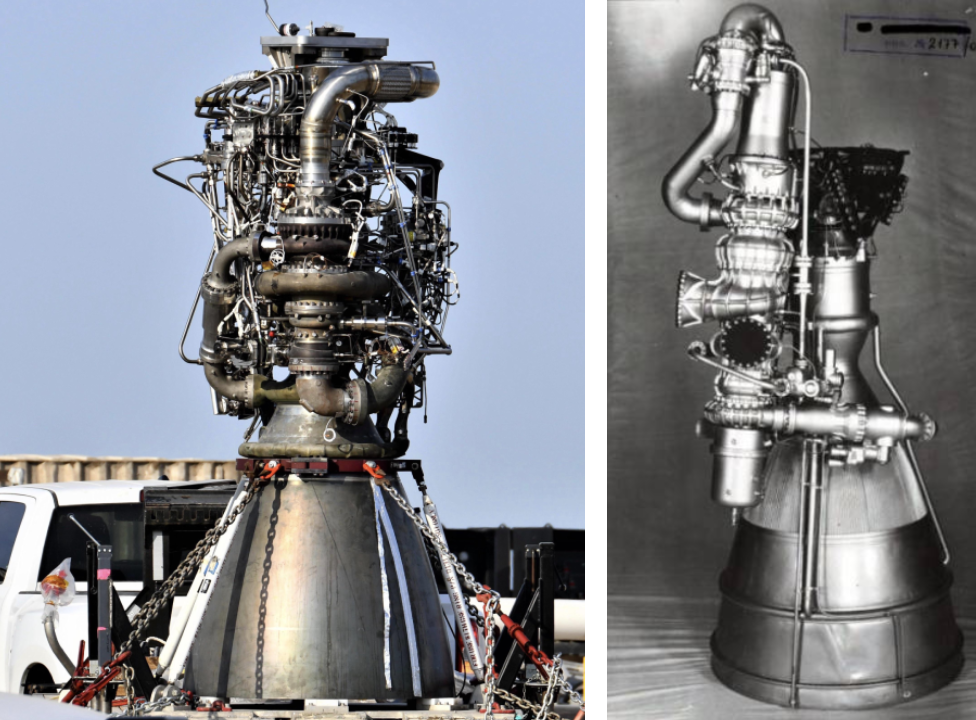
Everyday Astronaut explains the difference in these engine cycles as follows (also available in-depth here and here):
"Full-flow staged combustion cycle is named for the flow of the propellants through the preburners. Both the fuel and the oxidizer are totally routed through a preburner and a turbine. This means that the cycle design features both a fuel-rich preburner and an oxidizer-rich preburner. Almost all of the oxidizer is run through the oxidizer-rich preburner and turbine, – almost all of the fuel is run through the fuel-rich preburner and turbine." and for oxygen-rich staged combustion "It runs - all the oxidizer through the turbine, and then routes this now-hot gas into the main combustion chamber. This way no propellant is wasted."
For controlling flight, the N1 opted for differential throttling of its outer engines for pitch and yaw control, differential throttling is when some engines are throttled down to control the direction of the rocket. To do differential throttling the outer twenty-four NK-15s were controlled by the KORD engine control system. SpaceX originally chose a hydraulic thrust vector control system for the Super Heavy booster to gimbal the inner thirteen engines, which allows for pitch, yaw, and roll control. Since the second integrated flight test of Starship-Super Heavy, the inner thirteen engines are controlled by an electric thrust vector control system.
Both the Super Heavy booster and N1 have experienced failures in flight, Super Heavy has currently failed twice with the N1 failing four times.
The first failure of the N1 was caused by transient voltages in the engine section and a propellant leak due to pogo oscillation. This led to a fire in the engine section which caused the KORD engine control system to shut down the entire first stage a minute and eight seconds into the flight. The second failure was caused by a turbopump explosion in one of the NK-15 engines, leading to a fire and a shutdown of all but one engine. The N1 rocket then fell back on the pad and exploded but didn't fully detonate all of its onboard propellants. The third failure of the N1 was caused by an uncontrolled roll leading to structural disintegration of the entire rocket. The fourth flight attempt was the most successful flight of the N1 but still ended in failure. The N1's final failure was caused by fuel and oxidizer lines bursting due to structural stress a minute and a half into the flight, the burst lines caused an engine to explode and eventually break up of the vehicle.
The first failure of Super Heavy was caused by a fire in the engine section of the booster causing several engines to explode and loss of hydraulic thrust vector control. Super Heavy booster 7 would end up being destroyed after almost four minutes of tumbling in flight by the automatic flight termination system. The failure on this flight led to a greater fire suppression system and more isolation between each engine. The second failure of a Super Heavy booster was lost during an attempted boost backburn where an engine was lost and the booster was ripped apart due to structural forces on the booster. The ultimate root cause of the failure is still being looked into by teams at SpaceX.

Ultimately, and in my opinion, Super Heavy has had a far more successful flight history with it superseding the N1 in total flight time after its second flight. The consistent failures of the N1 can be traced back to a lack of thorough ground testing before flight and a lack of adequate engine and flight control computers.
What was the N1?
The N1 rocket was a three-stage super heavy-lift launch vehicle built in the Union of Soviet Socialist Republics, communist Russia, in the second half of the 1960s. The N1 was built primarily for a Soviet crewed Lunar landing mission as communist Russia was in a race to land a man on the Moon with the United States. The Union of Soviet Socialist Republics and modern-day Russia claim the N1 could have delivered ninety-five tons to low Earth orbit. The N1 rocket failed to reach orbit over its four flight attempts from February 1969 to November 1972.
The first stage of the N1 rocket was powered by thirty NK-15 engines producing 4630 tons of thrust burning rocket-grade kerosene and liquid oxygen for two minutes and five seconds. The first stage is commonly called Block A and was seventeen meters wide at the base and thirty meters tall.
The second stage of the N1 was powered by eight NK-15V engines, the NK-15V is a vacuum-optimized version of the NK-15, producing 1430 tons of thrust and also burning rocket-grade kerosene and liquid oxygen for a believed two minutes. The second stage is commonly called Block B and was ten meters wide at the base and twenty meters tall.
The Third stage of the N1 was powered by four NK-21 engines once again burning rocket-grade kerosene and liquid oxygen to produce 164 tons of thrust for a believed six minutes and ten seconds. The third stage is commonly called Block V and was six and a half meters wide and fourteen meters tall.
Fourth and fifth stages were also planned for Lunar flights.

What is Starship-Super Heavy?
Starship-Super Heavy is SpaceX's in-development fully reusable super heavy-lift launch vehicle. SpaceX is currently aiming to have the launch vehicle deliver one hundred and fifty tons to low Earth orbit while reused or two hundred and fifty tons when expended.
Starship is the second stage of the Starship-Super Heavy launch vehicle and is planned to be reused. The Starship second stage is fifty meters tall and nine meters wide. The second stage is powered by three sea-level Raptor engines and three vacuum Raptor Engines with plans to increase it to six in the future, these engines burn liquid methane and liquid oxygen with a maximum thrust of 1500 tons. Starship is believed to weigh one hundred tons empty and one thousand three hundred tons fully fuelled. For reusability, Starship will separate from the booster, Super Heavy, in flight and continue up toward orbit. After a few orbits Starship will perform a deorbit burn and re-enter the atmosphere, after re-entry, Starship will aim to land on the chopsticks' of the launch tower, also called Mechazilla.
Super Heavy is the first stage booster for the Starship-Super Heavy launch vehicle and is planned to be reused, it is also currently the most powerful rocket stage ever flown. The Super Heavy booster is seventy-one meters tall and nine meters wide. The booster is powered by thirty-three Raptor engines burning liquid methane and liquid oxygen with a maximum thrust of 7590 tons. Super Heavy is believed to weigh two hundred tons empty and three thousand six hundred tons fully fuelled. For reusability, Super Heavy will launch from the Orbital Launch Mount and will then perform a boost back burn and land on the 'chopsticks' of the launch tower, also called Mechazilla, using its grid fins at the top for greater aerodynamic control during unpowered flight. Super Heavy also has a hot-staging ring atop of it to improve the performance of the Starship-Super Heavy stack and simplify the staging process.
